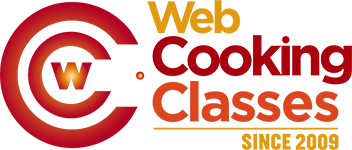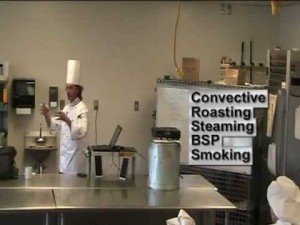Cooking becomes much easier when you discover that there are only two types of heat for cooking. We’re starting a new semester in culinary college, and this is the very first lesson. What type of heat you use and how you apply it to food is the basis of all cooking.
My Elements of Entrée Production class will eventually be cooking for 30 people in the adjacent student dining room, so this is not just theory. We must put it into practice and be able to duplicate the process with quality and consistency every time. That’s what makes a professional chef.
I challenge the class to use this basic information to question everything they apply heat to. They need to ask themselves, “Am I applying heat directly or indirectly to this food?” Most often, direct heat results in quick cooking and brown color. Indirect heat can take longer and be harder to develop plate-appeal.
Direct heat versus indirect heat is the first lesson in your expectation of the final result. This may seem obvious or overly basic, but still very important. When planning meals or following recipes, being aware of HOW the heat is cooking your food is paramount.
There are only two types of heat for cooking, conductive and convective.
Conductive heat is direct-source heat. This is when there is no medium or liaison between the heat source and the food product. Sauté’ is a dry conductive cooking method because the stove-top burner is heating a pan, the product in direct contact with the pan.
Broiling and Grilling are conductive cooking processes as well. They can be considered mirror images of each other. Grilling applies heat directly to food from below through gas, charcoal, or heated stones. Broiling applies heat directly to food from above through gas or electric element. They cook the same way, just from different positions.
Convective heat is indirect-source heat. You can consider a cooking method convective when there is something between the heat source and what you’re cooking. Roasting is a convective cooking method because the heat is transferred to food through hot air.
Steaming is a moist convective cooking process because it uses steam as the medium for imparting heat to food the same way that Smoking uses dry heat to give a distinctive flavor. Whenever you boil, simmer, or poach something, you’re using a moist convective cooking process.
This is an important concept to use as the foundation for any culinary education. When you add so much olive oil to a sauté pan that your food floats, you’ve changed from a conductive to convective cooking process. Instead of the item being in contact with the pan, using direct source heat, it’s now being cooked indirectly through the oil, a convective process.
When you discover and become aware of the two types of heat for cooking, your end results will improve because you’ll have a better initial plan. Just like my culinary students, you’ll be asking yourself questions about HOW to cook something rather than WHAT to cook.
Heat transfer, knife skills, mother sauces and more on my cooking DVDs


Trackbacks/Pingbacks